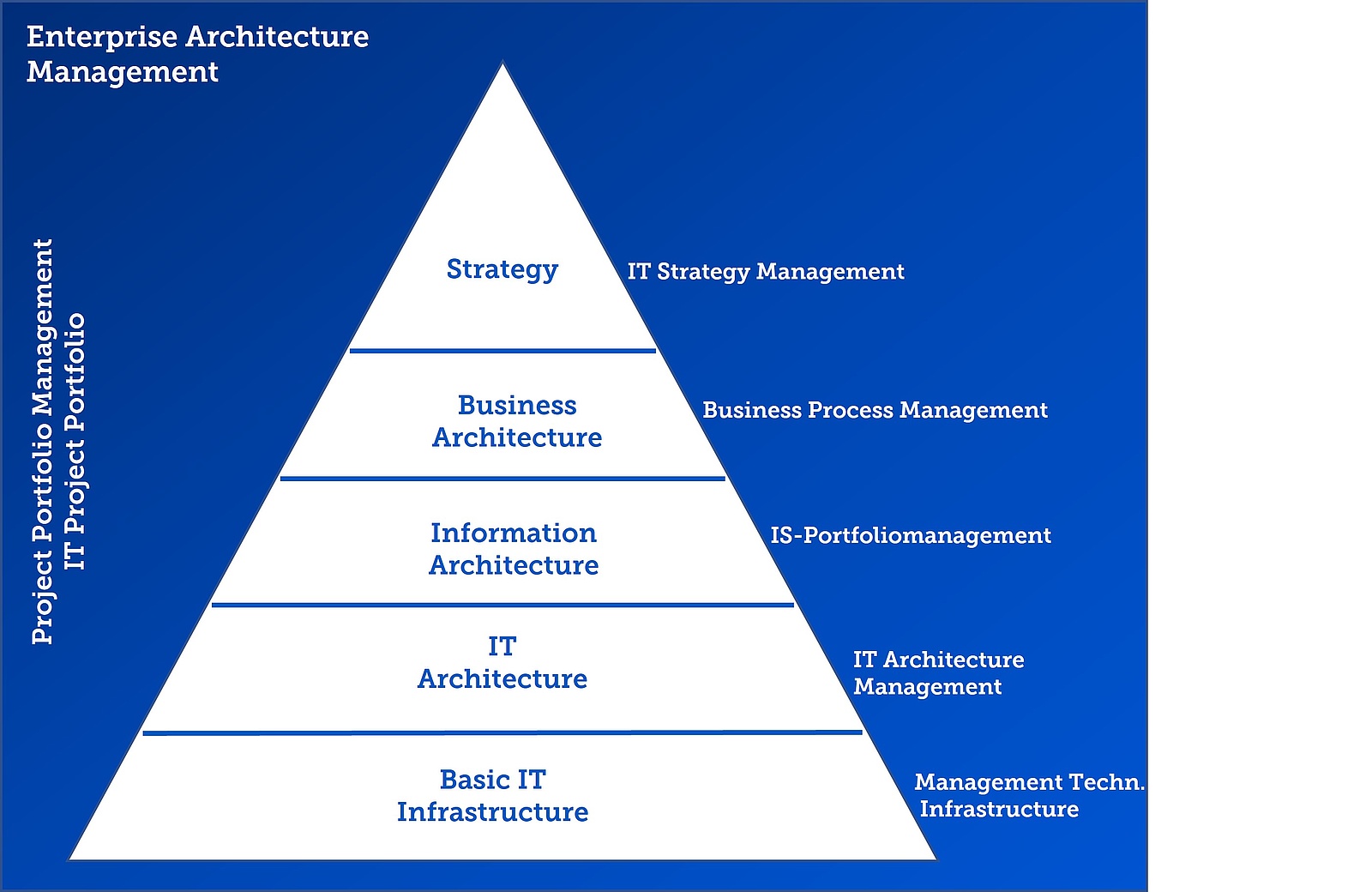A Bridge between Business and IT
The rapid pace of digitalization is ringing in changes for most companies. While Industry 4.0 and new technologies such as IoT, Big Data, machine learning and artificial intelligence offer many opportunities, they also come with a raft of new and far-reaching requirements for enterprises. The success of corporate strategies is thus increasingly determined by the design of the IT landscape. A successful alignment of business and IT therefore relies on bringing a company’s information technology in line with its strategic goals and requirements.
A close integration of corporate strategy and IT activities presents a major challenge for many companies. What’s more, companies often lack an overview of the entire landscape, including processes, value flows and data. Against this backdrop, concepts for the holistic management of business and information processes are becoming increasingly important. The main focus here is the entire performance infrastructure of a company.
Enterprise Architecture Management (EAM) has become established as an important management discipline to address these challenges and issues. By mapping business structures and relationships, EAM underpins the strategic business planning of an enterprise and development of the supporting information technology. The focus here is not only the current status of the enterprise architecture (ACTUAL), but also in particular the planned future architecture (TARGET) and the action required to achieve this.
EAM Objectives and Added Value
Key objectives of Enterprise Architecture Management include systematic documentation of the application landscape and long-term alignment of the landscape with the company’s goals, taking into account the relevant business processes. The aim is to ensure that the enterprise’s IT infrastructure remains responsive to the ever-changing demands of the business. In addition, EAM enables maximum transparency by highlighting redundancies and gaps in the IT portfolio and linking all IT assets to business requirements and processes. This can then be used as the basis for planning and implementing cost reductions, standardizations, and consolidations; all of which tend to be top of the agenda for CIOs. Finally, the increased (cost) transparency of EAM also makes it easier to demonstrate the added value of IT in terms of business success.
“In the 21st century, Enterprise Architecture will be the defining factor – the factor that separates the winners from the losers.” (John A. Zachman)
Successful Transformation Projects – for SAP S/4HANA and More
EAM (and related tools) can be used to create a map of capabilities in order to document and, at the same time, visualize the relationships between the business architecture and the IT architecture. This permits the swift and straightforward identification of interdependencies and the impact of changes. The assignment of business functions to application systems also enables the derivation of a corresponding target architecture.
EAM can thus support transformations of any kind in all key phases, such as target architecture definition, migration planning, and implementation control for example.
Because EAM creates a global understanding of the relationships between corporate strategy, business model, and supporting IT, it facilitates and accelerates the preparation and planning of transformation projects. Through this holistic and structured approach, Enterprise Architecture Management thus also provides valuable support during the transition to SAP S/4HANA.

